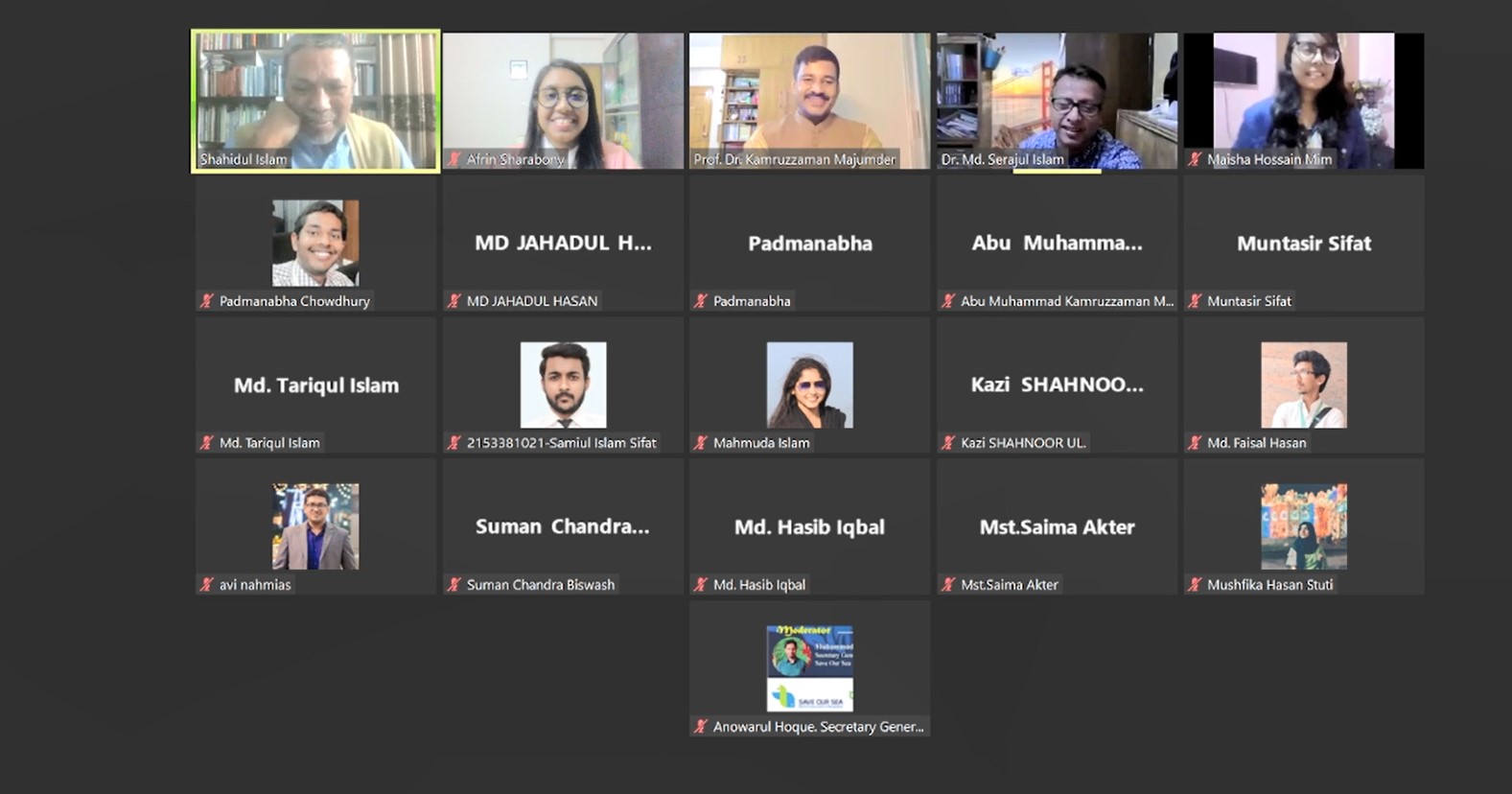Status of Air and Noise Quality in the Coastal area of Bangladesh: A Study in Cox’s Bazar Area
Prof. Dr. Ahmad Kamruzzaman Majumder
Summary of the Presentation
Prof. Kamruzzaman mentioned that the air of the coastal city Cox’s Bazar is highly polluted along with acute sound pollution compared to the national standard. Based on the information collected from 52 locations of the city covering seven land use types, the study shows that PM1, PM2.5 and PM10 level at Tarabniyar bazar, Pateya School bazar and Burmese Market (mostly commercial areas) of the city are 4.80 (PM1) and 4.445 (PM10) times higher than the national level and varies from 312.25 µg/m3 to 300.00 µg/m3 for PM2.5 , 666.75 µg/m3 to 618.50 µg/m3 for PM10 and for CO from 7 ppm in residential area to 111 ppm in sensitive areas which is also 1.3 to 2.64 folds higher than national level. He also added that the average concentration of PM1, PM2.5 and PM10 is beyond the standard level in residential area and road intersection area.
The sound pollution of Bollia para, Tarabaniyar Chora and Madakoccopia National Park (mostly sensitive area and mixed area) varies from 94.00 dBA to 87.48 dBA which are also higher than the national value. The main causes of air and sound pollution are construction works, industrial works and tourism. Unless appropriate and adequate measures are taken in our tourism policy to reduce this high level of air and sound pollution, the sustainability of Cox’s Bazar as a tourist destination would be challenged.
The question and answer session was very vibrant with active participation of CRU and CAPS members.
In the concluding speech Prof. Dr. M. Shahidul Islam highlighted the importance of water quality monitoring of the Cox’s Bazar Coastal area. In that case, CRU and CAPS can work together in future.

